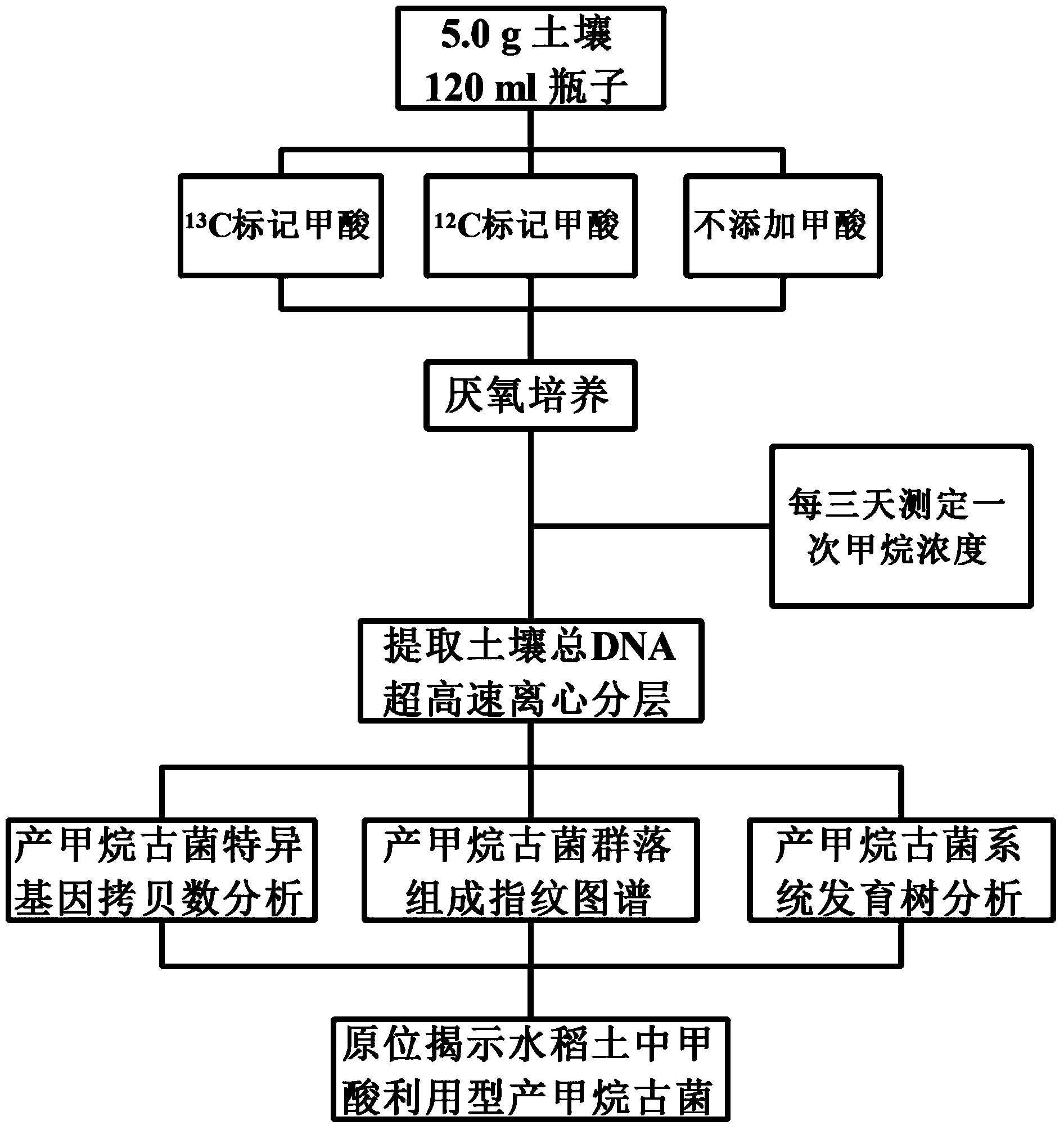Method for revealing and distinguishing paddy field formic acid utilization type methanogenic archaea in situ by adopting DNA-based stable isotope probing technology
A technology of methanogenic archaea and isotopes, applied in the field of soil microbial ecology, can solve the problems that strains cannot reflect the real situation of paddy soil, pure culture conditions cannot represent the in situ habitat of paddy soil, and the growth environment is very demanding.
Inactive Publication Date: 2014-08-06
INST OF SOIL SCI CHINESE ACAD OF SCI
View PDF0 Cites 10 Cited by
- Summary
- Abstract
- Description
- Claims
- Application Information
AI Technical Summary
Problems solved by technology
However, formic acid-utilizing methanogenic archaea have not been reported in paddy soils
The reason for this is firstly that the currently cultivable microorganisms only account for 1% of all microorganisms, and a large number of microorganisms can only survive and perform ecological functions in specific habitats, and cannot be purely cultivated; secondly, methanogenic archaea are strictly anaerobic microorganisms , which have high requirements on the growth environment, and it is difficult to screen them by traditional methods; third, although some methanogenic archaea can use formic acid to grow under pure culture conditions, pure culture conditions cannot represent the in situ habitat in paddy soil, So the obtained strains cannot reflect the real situation in the paddy soil
Method used
the structure of the environmentally friendly knitted fabric provided by the present invention; figure 2 Flow chart of the yarn wrapping machine for environmentally friendly knitted fabrics and storage devices; image 3 Is the parameter map of the yarn covering machine
View moreImage
Smart Image Click on the blue labels to locate them in the text.
Smart ImageViewing Examples
Examples
Experimental program
Comparison scheme
Effect test
Embodiment 1
[0023] Taking Jiangdu paddy soil in Yangzhou as the research object, DNA stable isotope probes were used to reveal and discriminate formic acid-utilizing methanogenic archaea species in paddy soil in situ.
[0024] (1) 13 Microcosmic Cultivation Experiment of C-formic Acid
the structure of the environmentally friendly knitted fabric provided by the present invention; figure 2 Flow chart of the yarn wrapping machine for environmentally friendly knitted fabrics and storage devices; image 3 Is the parameter map of the yarn covering machine
Login to View More PUM
 Login to View More
Login to View More Abstract
A method for revealing and distinguishing paddy field formic acid utilization type methanogenic archaea in situ by adopting DNA-based stable isotope probing technology comprises the followings steps: (1), collecting a paddy soil sample; (2), performing a micro universe cultivation experiment of <13>C-formic acid; (3), performing centrifugation layering on the microbe total DNA of <13>C-formic acid cultivation soil by using an ultracentrifuge; (4), performing real-time quantitative PCR analysis and finger-print analysis on methanogenic archaea genes in layers of multiple buoyant densities after layering to judge whether the paddy soil contains the formic acid utilization type methanogenic archaea with metabolic activity. Therefore, the method can be used for keenly revealing the paddy field formic acid utilization type methanogenic archaea in situ based on the DNA-based stable isotope probing technology, and has great significance on the understanding of the paddy field nutrient cycling process driven by microbes and the cognition of the ecological functions of paddy field methanogenic archaea functional groups.
Description
technical field [0001] The invention relates to a method for using a DNA-based Stable Isotope Probing (DNA-based Stable Isotope Probing) in situ to reveal and distinguish formic acid-utilizing methanogenic archaea in paddy fields, and belongs to the field of soil microbial ecology. Background technique [0002] Of the 150 million hectares of rice fields in the world, 75% are flooded. The anaerobic environment makes the paddy soil rich in small molecule organic acids. By metabolizing these substances, the microbes drive the biogeochemical cycles of the paddy ecosystem. Formic acid is one of the important intermediate products in the degradation process of organic matter in paddy fields, and its concentration in paddy soil can be as high as 150 μM. A variety of microorganisms in paddy soil can metabolize formic acid. For example, a variety of anaerobic bacteria in the Clostridia class can use formic acid as an electron donor to perform sulfate reduction and iron reduction ...
Claims
the structure of the environmentally friendly knitted fabric provided by the present invention; figure 2 Flow chart of the yarn wrapping machine for environmentally friendly knitted fabrics and storage devices; image 3 Is the parameter map of the yarn covering machine
Login to View More Application Information
Patent Timeline
 Login to View More
Login to View More IPC IPC(8): C12Q1/68C12Q1/04
CPCC12Q1/6851C12Q2531/113C12Q2565/125C12Q2563/101
Inventor 冯有智林先贵贾仲君
Owner INST OF SOIL SCI CHINESE ACAD OF SCI
Features
- R&D
- Intellectual Property
- Life Sciences
- Materials
- Tech Scout
Why Patsnap Eureka
- Unparalleled Data Quality
- Higher Quality Content
- 60% Fewer Hallucinations
Social media
Patsnap Eureka Blog
Learn More Browse by: Latest US Patents, China's latest patents, Technical Efficacy Thesaurus, Application Domain, Technology Topic, Popular Technical Reports.
© 2025 PatSnap. All rights reserved.Legal|Privacy policy|Modern Slavery Act Transparency Statement|Sitemap|About US| Contact US: help@patsnap.com



